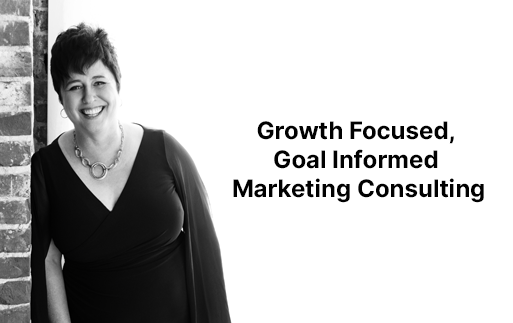The Anatomy of SMART Goals
Ever found yourself down the rabbit hole of ambitious but ambiguous goals that you can't translate into action? Welcome to the conundrum that SMART goals can elegantly solve.
This tried-and-true methodology stands for Specific, Measurable, Achievable, Relevant, and Time-Bound.
It's like taking a jigsaw puzzle and fitting the pieces together to create a coherent picture—each acronym is a piece of the planning puzzle.
The biggest reason why I love smart goals? It's like the beginning of establishing your PLAN of action.
Set SMART Goals for Marketing: The Super Quick Guide
Goals provide a framework that makes a dense plan not just palatable but actionable. The behind-the-scenes "hustle" turns your dreams into tangible, workable missions.
SMART is an acronym that provides clarity for your marketing efforts:
- Specificity: Tailoring your goal to a particular outcome.
- Measurability: Establishing key performance indicators (KPIs) to gauge progress.
- Achievability: Ensuring the goal fits within resource constraints.
- Relevance: Aligning the goal with broader business objectives.
- Time-Bound: Defining the timeframe within which the goal should be achieved.
The best part? You don't need a marketing team. These goals can help you attract new clients so long as it's aligned with your overarching business goals. If you want an in-depth review, read our post, SMART Goals for Digital Marketing: 5 Ways to Kickstart Your Marketing.
Set SMART Goals in Marketing: A Compelling Case
One frequent mistake that throws marketing campaigns off track is poor planning—specifically, overreaching ambitions and unclear objectives. This unrealistic aspiration, often a newbie mistake, becomes the weak link that can compromise even the most well-intended strategies. ... Not to mention leaving you feeling disappointed.
The problem compounds when there are inadequate resources to fuel a lofty mission. No matter how ambitious you are, running out of steam halfway through isn't ideal. Time-sensitive goals can also fall through the cracks if you set vague timelines.
Bottom line? SMART goals help keep your aspirations in check while ensuring alignment with actual growth capabilities, but you have to set reasonable goals and timelines (and adjust as things change).

9 Goal Examples: SMART Digital Marketing Goals
SMART Objectives for Digital Marketing
Setting SMART objectives for digital marketing is crucial for ensuring that your marketing efforts are both effective and measurable. These objectives help you focus on specific outcomes, track progress, and make necessary adjustments to achieve your goals. Here are some examples of how to set SMART objectives for your digital marketing strategy:
- Specificity: Define clear and precise goals, such as increasing website traffic by 20% within six months.
- Measurability: Use key performance indicators (KPIs) like conversion rates, click-through rates, and social media engagement to measure success.
- Achievability: Ensure that your goals are realistic given your resources and capabilities.
- Relevance: Align your objectives with broader business goals to ensure they contribute to overall success.
- Time-Bound: Set a specific timeframe for achieving your goals to maintain focus and urgency.
Social Media SMART Goals Examples
Social media platforms offer a unique opportunity to engage with your audience and build brand awareness. Setting SMART goals for social media can help you maximize these opportunities. Here are some examples of social media SMART goals:
- Increase Instagram Followers: Grow our Instagram follower count by 15% over the next three months by posting daily content and engaging with followers.
- Boost Facebook Engagement: Increase Facebook post engagement by 10% within two months by sharing more interactive content, such as polls and live videos.
- Enhance LinkedIn Connections: Add 50 new LinkedIn connections per month by actively participating in industry groups and sharing valuable content.
Digital Marketing SMART Goals Examples
Digital marketing encompasses various channels and tactics, from SEO to email marketing.
Setting SMART goals for each aspect of your digital marketing strategy ensures a comprehensive approach. Here are some examples of digital marketing SMART goals:
- SEO Improvement: Increase organic search traffic by 25% within six months by optimizing existing content and building high-quality backlinks.
- Email Marketing Growth: Grow our email subscriber list by 20% in the next quarter by offering exclusive content and promotions to new subscribers.
- Content Marketing Expansion: Publish two high-quality blog posts per week for the next six months to drive traffic and improve search engine rankings.
These nine examples outline specific goals using the SMART framework. We strongly suggest you set goals at the business level first, then follow up with social media marketing, content marketing, or other marketing objectives.
Doing this ensures alignment between your revenue and program goals and the marketing objectives necessary to achieve your goals.
The key to the SMART framework for goal-setting is making sure it's an attainable goal. Remember: you're in charge of what effective goals look like for your organization.
1. Boost Your Social Media Game
Increase our X/Twitter brand awareness by scheduling three daily tweets starting November 1st, targeting an 8% follower growth by March 30th. The content will revolve around industry trends and educational resources.
Why it Works:
- Specificity: Specific to X/Twitter, outlining a clear growth metric.
- Measurability: Measurable by tracking X/Twitter follower count.
- Achievability: Attainable with a realistic tweeting schedule.
- Relevance: Highly relevant, given the importance of social media in your marketing plan.
- Time-Bound: Five months provides a reasonable timeframe to assess performance.
2. Level Up Customer Engagement
We will increase the number and rewrite our website's calls-to-action (CTAs) on 10 key product pages using keywords from reviews and testimonials before December 31st, complemented by A/B testing conducted by an outside marketer.
Why It's SMART:
- Specificity: Focused on optimizing CTAs.
- Measurability: Progress is measurable via tracking changes, A/B test results, and tracking conversions against historical data.
- Achievability: Feasible through the aid of a professional digital marketer.
- Relevance: Directly impacts customer engagement—core to any marketing strategy.
- Time-Bound: We don't know when the project starts. Plan at least a four-month window for testing and implementation.

Marketing Consulting for Service-Based Businesses
Need help setting SMART business and marketing goals? Let's see if we're a fit to work together.
3. Scale Your Search Engine (SEO) Impact
To increase our organic traffic via SEO by 3%, we will secure 50 high-quality backlinks by guest posting on sites with 50+ domain authority within six months.
Why It's SMART:
- Specificity: Explicitly aims to improve SEO through backlinks.
- Measurability: Measurable by monitoring backlink metrics and search rankings.
- Achievability: Doable via guest blogging opportunities, but 50 posts in six months may be too aggressive.
- Relevance: Directly improves SERP rankings and online authority.
- Time-Bound: Depending on your support, six months is a challenging yet feasible target.
4. Expand Your Client Base with Referral Marketing
Survey 50 current and former clients in the next 30 days for customer satisfaction and to discover new advocates to add to our referral network. Negative feedback will be addressed within 30 days via our continuous improvement program.
Why It's SMART:
- Specificity: This goal is specific and focused on growing your clientele in the foreseeable future.
- Measurability: By using analytics, you can measure customer satisfaction levels and the performance of your outreach campaign. Watch your new client acquisition numbers (and returning clients) like a hawk.
- Achievability: Given your existing clientele and word-of-mouth referrals, hitting this target is realistic.
- Relevance: This goal serves dual purposes—amplifying marketing reach while contributing to the big picture of your business (e.g., addressing client feedback).
- Time-Bound: You've got a two-month window to activate advocates and roll in the new contracts. Better start now.
5. Elevate Your Brand Image
Partner with 10 Instagram micro-influencers (with 15k+ followers) within four months to garner at least 50 brand shout-outs on their accounts over the next six months.
Why It's SMART:
- Specificity: The focus is not on social media in general — it's all about Instagram and influencer partnerships.
- Measurability: It's a measurable goal, but keep tabs on your metrics: tally promoted posts, watch your follower numbers climb, engagement after influencer promotions end, and click-throughs. Ultimately, this is about conversions.
- Achievability: Consider enlisting marketing professionals to help with your vetting process so you find legit professionals whose audience aligns with yours.
- Relevance: If your clients frequent Instagram, then it's relevant.
- Time-Bound: This is an aggressive goal, but with a big team, it's doable.
6. Extend Your Thought Leadership
Add blogging to our digital marketing strategy within the next two months. Write well-researched, weekly posts focused on high-intent keywords. Roll out a backlinks program in three months to get 10 high-quality backlinks per month.
Why It's SMART:
- Specificity: You've spelled it out. Your roadmap details the what, how, and why.
- Measurability: Blogging metrics aren’t for show. Tracking post frequency, traffic, clicks, and monitoring backlinks helps you keep score.
- Achievability: It's achievable... with support. It would be overly aggressive for a solopreneur to suddenly start blogging without making other adjustments.
- Relevance: For coaches and consultants, cultivating thought leadership reinforces your expertise and builds your audience.
- Time-Bound: Two months, folks. Ready, set, blog.

7. Elevate the Sale: Up-Selling for the Win
Integrate upsells (e.g., related items or upgrades) for three top online services to boost sales revenue by 7% in the next six months.
Why It's SMART:
- Specificity: Defined tasks and offerings make this laser-focused.
- Measurability: A tracking system will be your best friend here: how many upsells, where people drop off, etc.
- Achievability: Quick implementation and additional goals around driving traffic are key. This will require more than upsells alone.
- Relevance: Increasing revenue on key services: very relevant.
- Time-Bound: The clock’s ticking on that six-month implementation and evaluation.
8. Power Up Partnerships
Develop collaborative partnerships with three complementary businesses within three months to increase referral lead generation by 5-10 leads per month within the next six months.
Why It's SMART:
- Specificity: Three businesses, three months — clear and specific.
- Measurability: Tracking the origins of new customers will be your new mantra.
- Achievability: Depending on the size of your network, the only barriers here are the ones you create.
- Relevance: Diversify your customer reach; it’s the spice of business, but don't get sidetracked. These have to be complementary businesses.
- Time-Bound: Three months on the clock—let’s make magic happen. At the six-month mark you may not have 5-10 monthly leads, but you should see progress.
9. User Journey Website Makeover
Within 60 days, hire a seasoned website expert to conduct a detailed assessment with an implementation report to evaluate the user experience and customer journey. Then, implement the changes within 90 days, including a tracking system to evaluate success.
Why It's SMART:
- Specificity: Detailed steps to overhaul the website.
- Measurability: Keep an eye on those user metrics.
- Attainability: A coding pro can help you sort this out.
- Relevance: Simplicity and efficiency keep customers clicking.
- Time-bound: Five months from hiring to implementation may be tight depending on the size of the website.
Frequently Asked Questions: Use SMART Goals to Help Your Marketing
Adjusting SMART Goals for Varied Industries: What's the Deal?
Ah, the classic tailoring dilemma: How do we adapt something general to something less general?
The SMART goal framework remains consistent, but the variables change. Like a suit tailored to fit, these goals should adhere to your industry's unique contours, skill sets, and limitations.
For example, a consultant may not be interested in social media growth, so the focus is on WOM referrals and speaking to groups.
Contrast that with tech companies. For them, a SMART goal might center around a 20% uptick in website traffic within a quarter, propelled by targeted SEO and content marketing.
Short-Term Hustle vs. Long-Term Game: Can SMART Goals Handle Both?
Ever heard the phrase, "Different strokes for different folks?" Turns out it's true for timelines, too. Whether you're zeroing in on a quarterly increase in lead generation or eyeing long-term brand elevation, SMART goals are your go-to.
These goals give your marketing efforts the backbone they need: specificity, measurability, achievability, relevance, and time-bound constraints. The idea is to steer clear of ambiguous ambitions that lead you down a rabbit hole, wasting time and resources.
Roadblocks Ahead: Anticipating Challenges
Every rose has its thorn, and the SMART goals framework is no exception. Over-ambitious aims that are more pie-in-the-sky than grounded in reality. Ensure your goals don't have you reaching for the stars when you only have a stepladder.
There's also the challenge of ensuring alignment with broader business aims. In our client work, we define SMART business goals first, then apply SMART marketing goals to ensure alignment.
Measuring Success: The Tools of the Trade
Got your SMART goals in place? Great. But how do you know they're working? Enter tools like Google Analytics, your trusty companion for demystifying website behavior and conversions.
Then you have your email marketing platform (e.g., MailerLite, ActiveCmapign) which provides email campaign reports and statistics informing the success of your marketing and sales efforts.
Remember, these platforms aren't just pretty dashboards; they're your lifeline to ensuring your defined goals aren't smart in name but also in action. Tracking progress also helps you find new ways to use your marketing channels to address your strategic objectives.
The Grand Alignment: Synchronizing SMART Goals with Business Objectives
You wouldn't use a map from 1998 to drive cross-country, would you? Similarly, when you set SMART goals for marketing, you need to check in with your bigger business goals and objectives to ensure alignment.
Begin with crystal-clear definitions of what your business needs to achieve. From there, carve out the marketing objectives that will serve as your stepping stones. And keep in mind: Those stepping stones are always subject to shift due to market dynamics or internal changes.
Your goals aren't set in stone; they're more like clay. Mold them according to your evolving business landscape, and you're on your way to a marketing strategy that not only talks the talk but walks the walk.
So there you have it—9 SMART goal examples to help you with setting SMART marketing goals to boost your business. Keep these insights in your back pocket, and you're well on your way to navigating the sometimes muddy waters of goal-setting.



